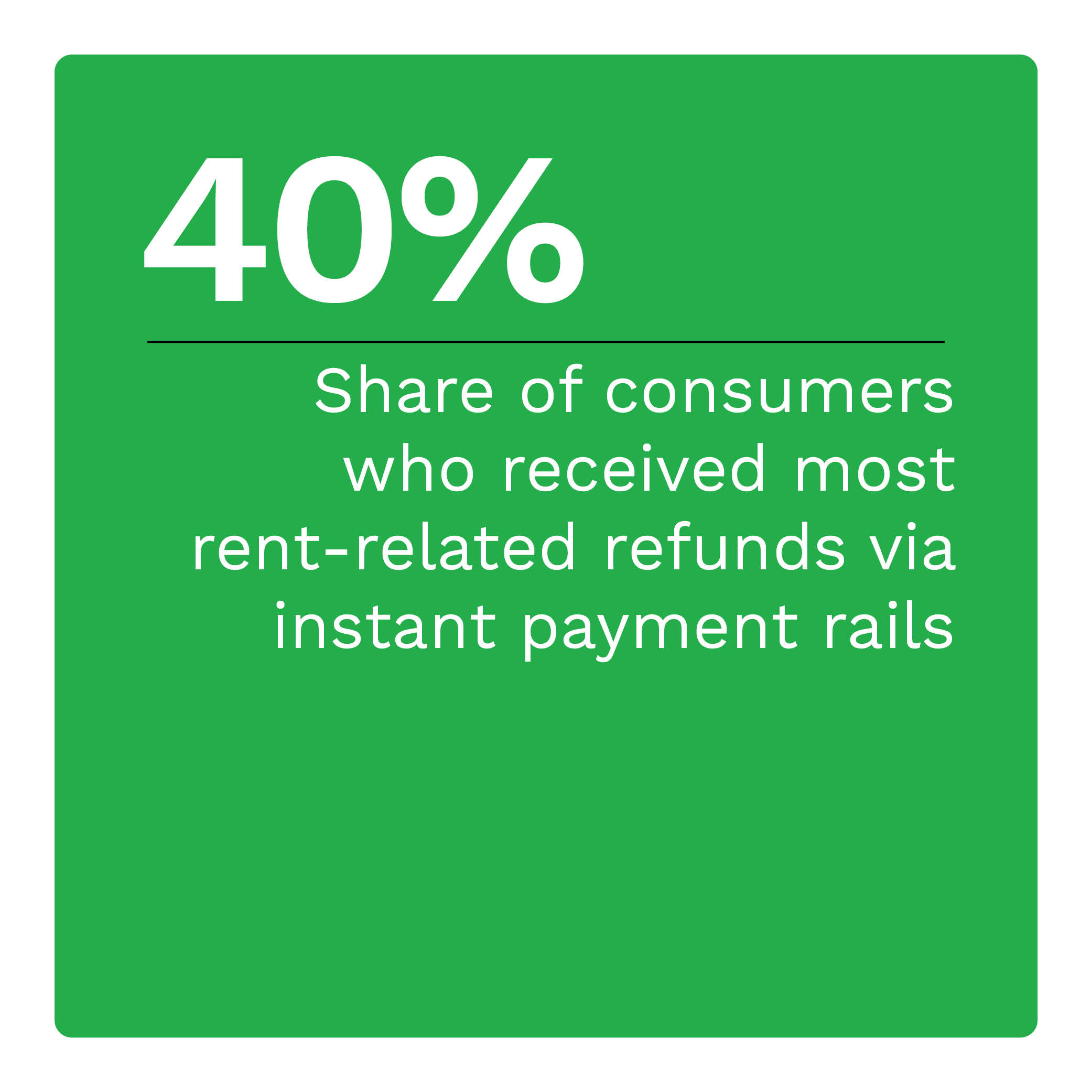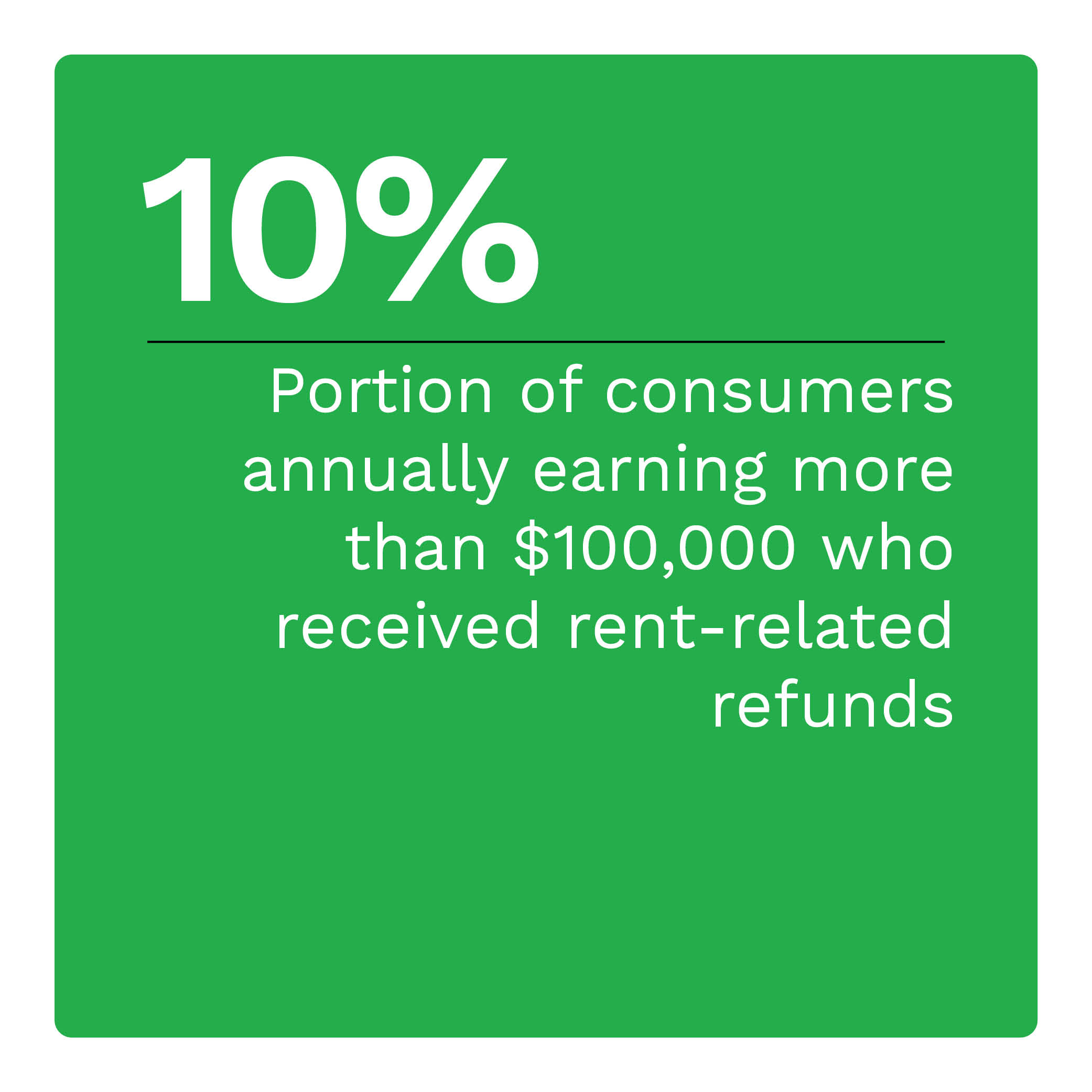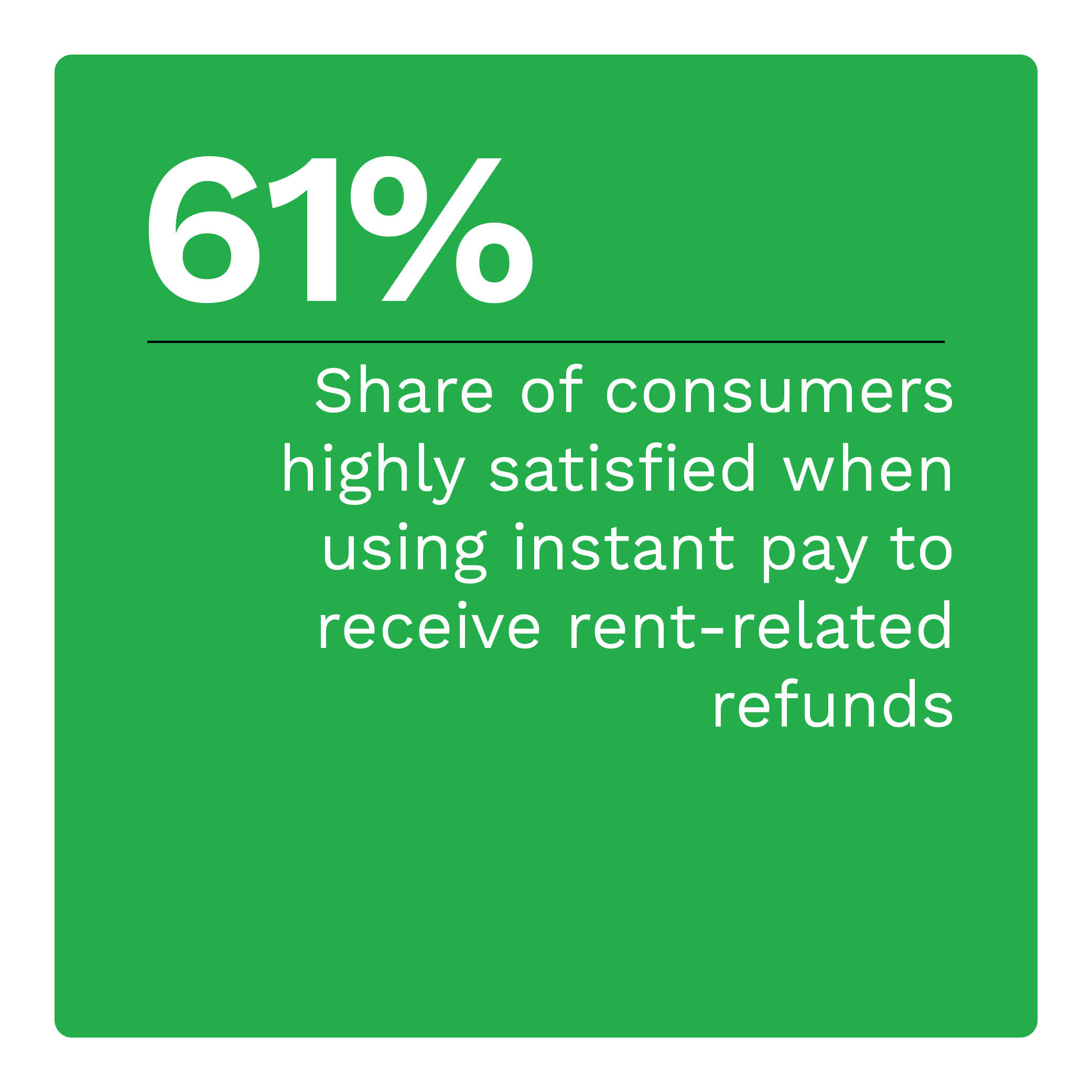Property Managers Issuing Refunds via Instant Pay Have More Satisfied Tenants
Renting an apartment, house or office space means receiving a rent-related refund, such as a returned security deposit or reimbursement for work on the property. As digital options have proliferated for paying rent directly from a bank account, data shows that digitization of refunds has picked up steam. Since these deposits are sizable — usually the cost of one month’s rent — it makes sense that tenants, especially those with high rents who tend to receive higher refunds, may want access to these refunds via instant pay.
In fact, renters prefer receiving instant refunds directly to their bank accounts. Among the 40% who received rent-related refunds and primarily used instant methods, 19% received most of those payments instantly to a bank account. Thirteen percent received most of those payments instantly to a digital wallet. More importantly, renters are more satisfied when receiving rent-related refunds instantly. This satisfaction suggests that property management companies offering instant pay may have a competitive advantage.
These are some of the findings explored in “Generation Instant: Renters and Refunds,” a PYMNTS Intelligence and Ingo Money collaboration. This report is based on a census-balanced survey of 2,606 consumers across the United States conducted between Aug. 28 and Oct. 4. It examines consumer satisfaction with disbursements received from government and nongovernment entities.
Other findings from the report include:
High-income consumers receive rent-related refunds the most.
Ten percent of consumers annually earning more than $100,000 and 8.7% of consumers who do not live paycheck to paycheck received rent-related refunds — each more than double the average share. Also prominent are Generation Z consumers, with 6.1% saying they have received rent-related refunds. This may be because they may change residences more often than other consumers.
On average, rent-related refunds using instant pay are larger than those received via non-instant methods.
 The average refund received via an instant method was $1,222, compared to $843 for non-instant — an increase of 46%. This could mean that when receiving larger rent-related refunds, consumers want the refund sooner rather than later. It could also mean that landlords with higher-value properties may use more modernized methods than landlords with lower-cost properties.
The average refund received via an instant method was $1,222, compared to $843 for non-instant — an increase of 46%. This could mean that when receiving larger rent-related refunds, consumers want the refund sooner rather than later. It could also mean that landlords with higher-value properties may use more modernized methods than landlords with lower-cost properties.
High shares of renters are highly satisfied with digital and instant pay for refunds.
Data shows that renters prefer receiving rent-related refunds via digital channels and instant payment methods. Although 57% of those receiving refunds via non-digital payment methods are very or extremely satisfied, 72% of renters receiving refunds via digital payment methods report that level of satisfaction. Moreover, 61% of renters are very or extremely satisfied with receiving rent-related refunds via instant payment methods.
Because renters prefer digital payments, property management firms could attract and retain high-income and digitally-savvy tenants by enabling instant disbursement of rent-related refunds. Download the report to learn how renters increasingly value receiving rent-related refunds via instant payment.
